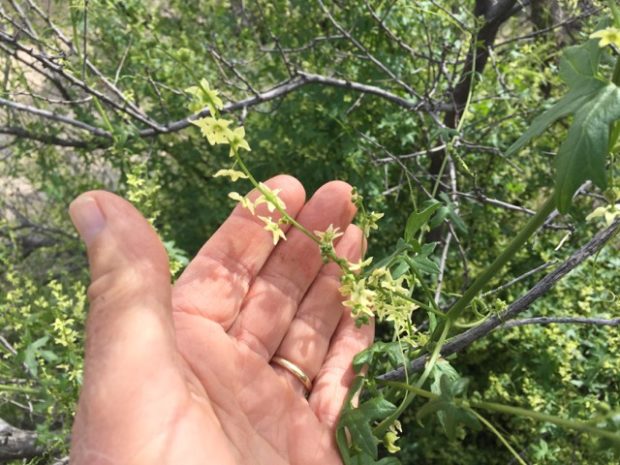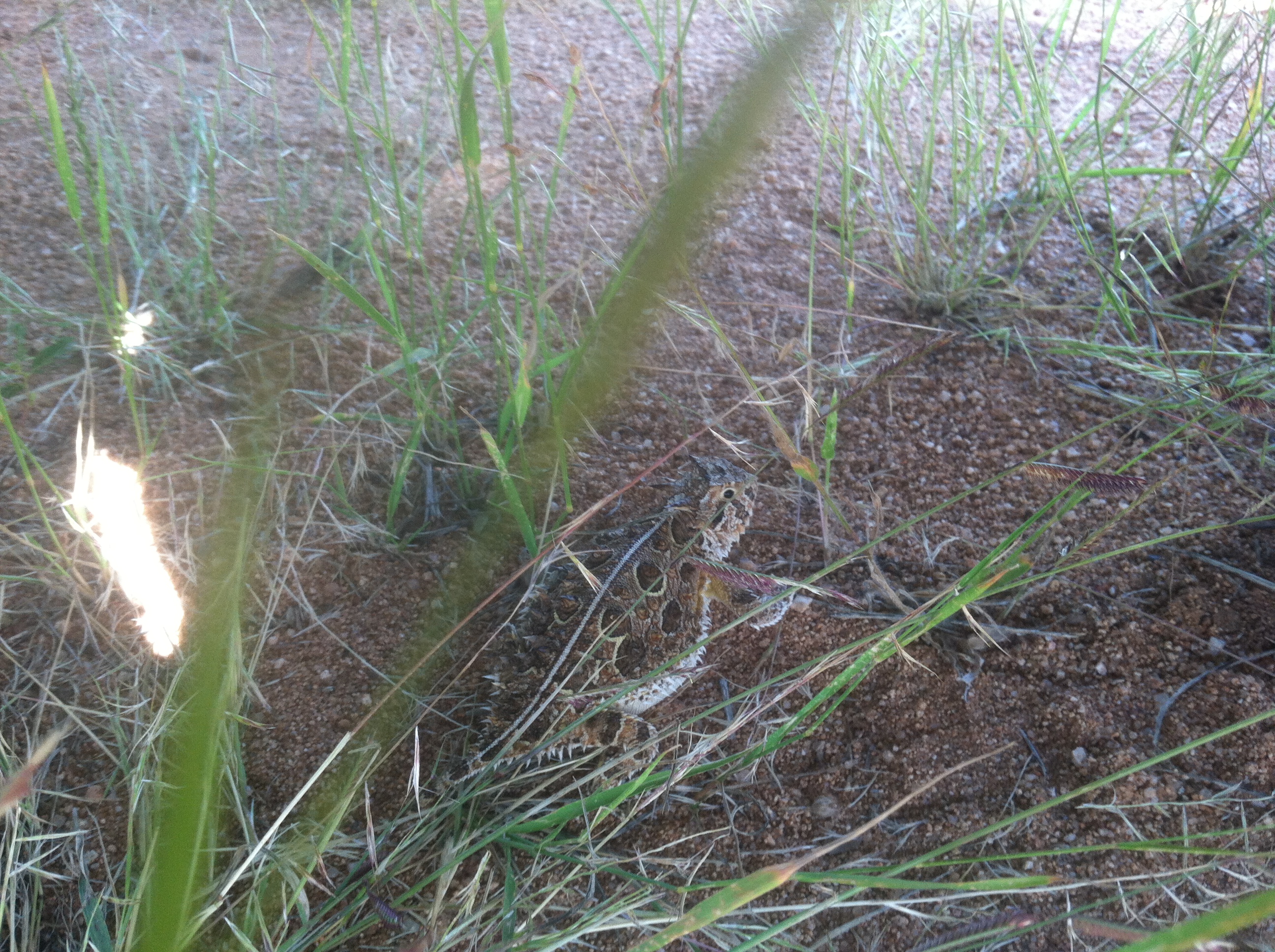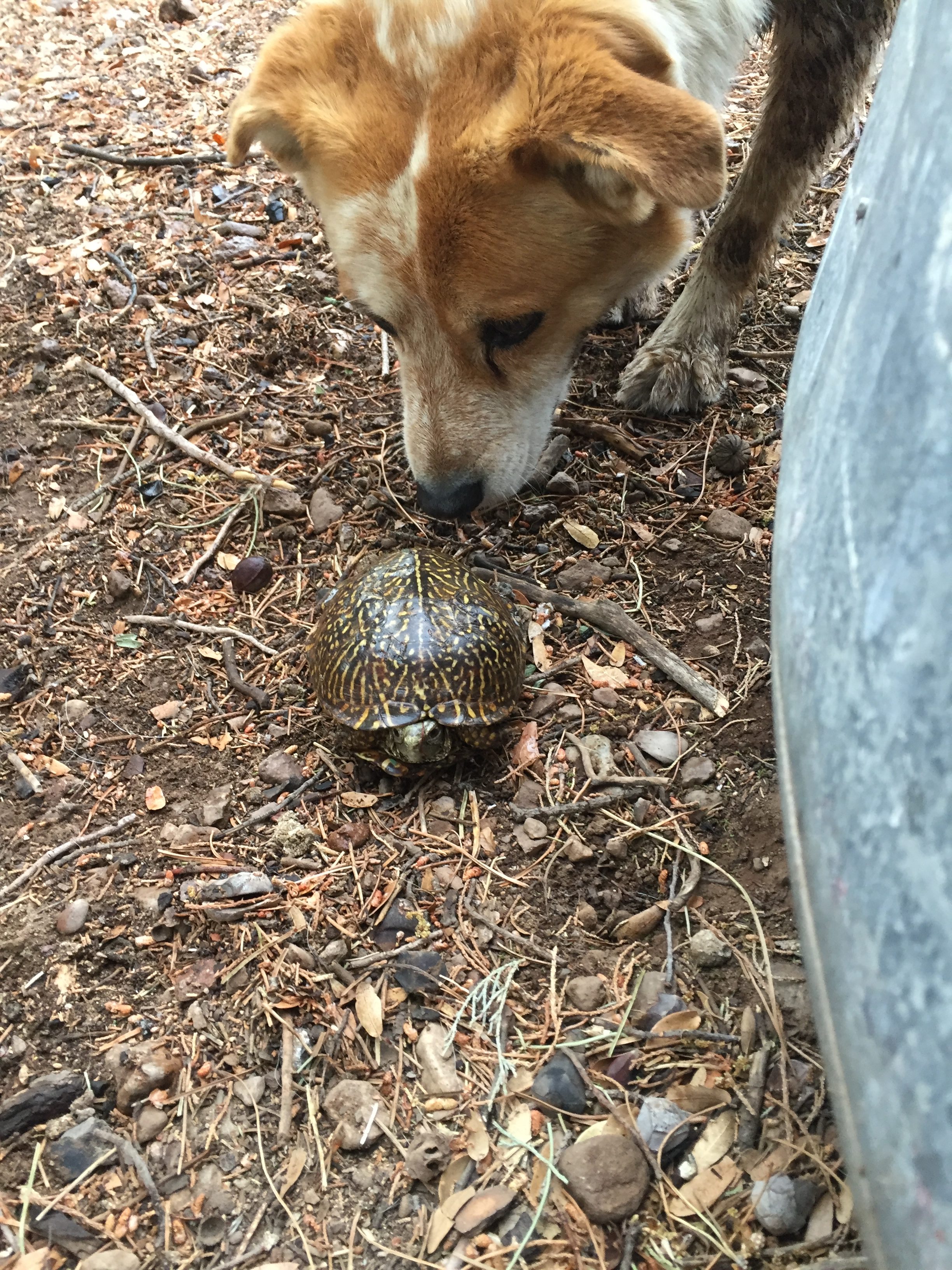There is only one species of Marah in Arizona, but there seven species in North America and all in are found in the west and down into Baja. Marah gilensis is not uncommon, but I hadn’t seen it in a while, so yahoo! Oh, a couple common names other than wild cucumber are big-root or manroot. The latter derived “from the swollen lobes and arm-like extensions of the unearthed tuber.” That name makes me and my son-in-law Jared giggle. We will always be third graders.
Oh, and I thought it was fascinating that the genus Marah is from the Hebrew for bitter. Marah, the town, shows up in Exodus. The traveling and very thirsty Israelites could not drink the bitter water from the well in Marah. When I looked up other species of the genus Marah I found that all parts of the plant had uses among the indigenous tribes of southern Canada to northwestern Mexico, from the bitter root to the fruit. Pretty cool.

I forgot to say that Marah is in the gourd family, Cucurbitaceae. It’s monoecious just like the squash or gourds you grow in your garden. So male flower and female flowers on the same plant. Think Ozzie and Harriet; same room, separate beds.

The photos are mine. And since I jabber a little about quail as well, a fun little book about our southwestern quail is Gambel’s Quail by Lynn Hassler and published by Rio Nuevo Publishers. It’s not that old, but you may need to search used book stores. It’s worth it.

Petey is saddened by the loss of local flora and fauna, but can still find moments of joy in creatures like the Texas Horned...

Isn’t it wonderful to live in a region where clouds and humidity and rain are so celebrated? You can tell the folks who originally...

I’ve known barn owls since I was a kid in Kentucky and I always saw them in barns roosting or nesting up high in...